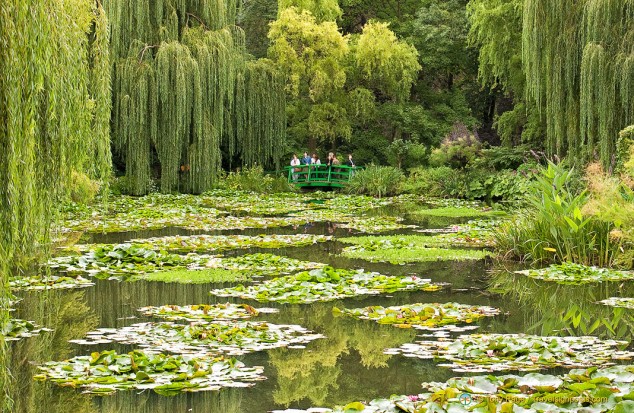Standing in Monet’s Garden is like being in a Monet Print:
Claude Monet, as many would know, is known to be the founder of Impressionism, a term which was coined from the title of his painting Impression Sunrise, “Soleil Levant”. A visit to Monet’s home and garden will take you into the the picturesque world of this Impressionist master painter. Monet’s garden is famous for its weeping willows, ponds with water lilies and the famous Japanese bridge, all settings and inspiration for his works.
Claude Monet was born in Paris 1840, however his family moved to Le Havre when he was five. Monet’s father actually wanted him to go into the family grocery business, however, fortunately, Monet chose to pursue his dream to become an artist.
Monet at Giverny
How Monet came to settle in Giverny is an interesting story. As with many painters, success did not come easily and the first half of his life was marred by poverty, financial stress and the tragic death of his first wife Camille. On the flip side, he was fortunate to have travelled and met Renoir and other great painters in Paris, in London he got to study the works of John Constable and William Turner and he also worked in the Netherlands.
After the death of Camille, Monet later married Alice Hoschede, whose estranged husband was previously a wealthy department store owner and patron of the arts. Alice, who had six children of her own, had cared for Monet’s two sons when Camille died. In 1883 the family moved to Giverny where Monet rented a house and two acres from a local landowner. Grief stricken by Camille’s death, Monet vowed never to be poor again and worked relentlessly to create some of his best paintings. By 1890, Monet was prosperous enough to purchase the house and the surrounding buildings and land for his now famous garden. It was in this attractive garden, that Monet indulged in his love of nature, in his art, his gardening and his photography.
When you stand in Monet’s garden, it feels like you’re standing in some Monet prints. The Japanese bridge, weeping willows and water lilies are instantly recognisable, as you would have seen these in Monet’s paintings in art galleries. Monet spent 40 years painting various aspects of his garden and he was very much driven by colour and light. The garden has a fuzzy structure so that the different colours saturate into the garden. It’s as if the garden was created out of a Monet painting. Monet’s son served in World War I and his series of Weeping Willow trees were painted as a homage to the French fallen soldiers.
Monet’s house and garden in Giverny is well worth a visit and some 500,000 people visit it during the six months that it’s open. Giverny itself is a charming country village and a drive on the Normandy highway leads you to there. Alternatively, you can just as easily join a tour, as we did, and let someone else deal with the driving.
If you’re not ready to hit the road but would like some Monet Posters to inspire you, CLICK HERE to see some of the Monet prints by AllPosters.
See Travel Signposts Giverny Photos HERE.


 Take Better Digital Photos eBook
Take Better Digital Photos eBook Guerrilla Travel Photography eBook
Guerrilla Travel Photography eBook
Leave a Reply